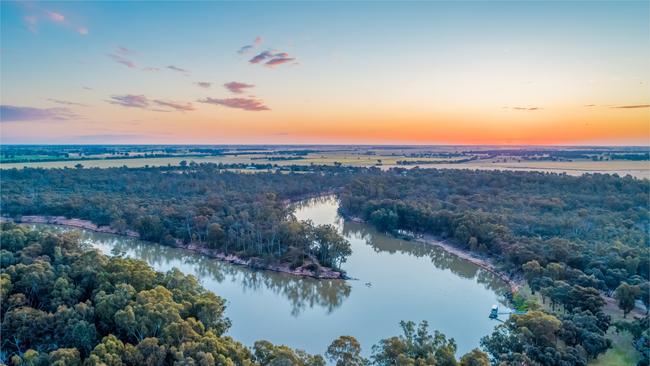Economy, productivity to benefit from plan to restore environment, but at $218bn cost
For the first time, the cost of meeting the government’s various environment commitments has been revealed.

The cost of meeting the government’s various commitments to protect and restore the environment has been revealed for the first time, with a cohort of the nation’s leading scientists estimating it will take $7.3bn a year over the next 30 years.
They argued the action was necessary to meet national ambitions to reach net zero emissions by 2050, protect and restore 30 per cent of land and water areas by 2030, deliver more sustainable, productive and resilient food systems, close the gap on Indigenous disadvantage, and grow towards and beyond a $100bn agricultural sector.
In what was billed as the most comprehensive assessment of its kind in Australia, the Wentworth Group of Concerned Scientists outlined a blueprint to restore “two centuries of degradation” while boosting economic productivity and sequestering carbon.
The six year project, contributed to by 60 researchers, estimated the bill to cover 24 key actions identified in the report at $218.8bn, equating to about 0.3 per cent of GDP a year for three decades.
It would be offset by improvements in agricultural production and remove one billion tonnes of carbon from the atmosphere, offsetting about 18 per cent of Australia’s net emissions and helping to meet net emission reduction obligations under the UN Paris Climate Agreement.
Addressing the National Press Club, Wentworth Group member and ANU Professor of Geography Jamie Pittock said the report showed how a healthy environment and productive economy were not mutually exclusive.
“Australia needs to recognise that the transition towards net zero emissions is actually an opportunity to repair Australia’s landscapes at scale,” Professor Pittock said.
“The blueprint shows the repair actions will contribute to Australia meeting our international commitments on climate change and biodiversity, at the same time as boosting the economy through increasing regional employment, improving agricultural productivity, and building resilience to climate change.”
The plan focused on the need to repair soil for agricultural use, fix fragmented river systems, restore native ecosystems, avoid extinctions and remediate estuaries.
Professor Pittock said he was confident that the proposals within the blueprint could garner bipartisan political support, particularly given some of the measures would improve agricultural productivity.
He said farmers had a key role to play in restoring the environment but would benefit from intensified production, improved soil and funding to act as stewards for native vegetation regrowth on unproductive land.
The plan proposes landholders be given up to $34bn to repair and conserve landscapes. Farmers would also be encouraged to revegetate the banks of waterways to improve water quality, provide wildlife corridors and sequester carbon.
“Many farmers are already doing a fantastic job joining things like their local landcare groups and participating in programs like regenerative agriculture that aims to produce more crops and livestock from the same or a smaller area of land by managing it better,” Professor Pittock said.
“I would say that farmers need whole farm plans so that they sit down and think about how they can intensify production on those areas of their farm that have the best soils that are most agriculturally capable.
“Then do they have opportunities to step back from some of the more marginal country that’s not really that profitable to farm and give that back to the environment?”
Professor of Environmental Management at the University of Queensland Martine Maron described current environmental funding as piecemeal and inadequate and said the economy would be affected if the concerns were not addressed.
“Frequent announcements of a million dollars here and there for worthy environmental projects can make it feel like the money is flowing, but at the moment we are throwing tiny cups of water at a burning building,” Professor Maron said.
She said nature was essential to economic health and prosperity.
“Half of Australia’s economy is moderately to strongly dependent on nature,” Professor Maron said.
“For example, Australia’s spectacular and unique landscapes and wildlife are a major drawcard for both domestic and international tourists who come to see kangaroos and koalas and leave tens of billions of dollars a year when they do.
“Many Australians do not realise that all of this is genuinely under threat and might even believe that our environment is probably pretty OK – after all, we are a wealthy, smart nation, with modern environmental protections, aren’t we?
“But the truth is, sadly, quite different. Every commonwealth state of the environment report since 1996 has shown that Australia’s environment is in poor and declining condition.”





To join the conversation, please log in. Don't have an account? Register
Join the conversation, you are commenting as Logout